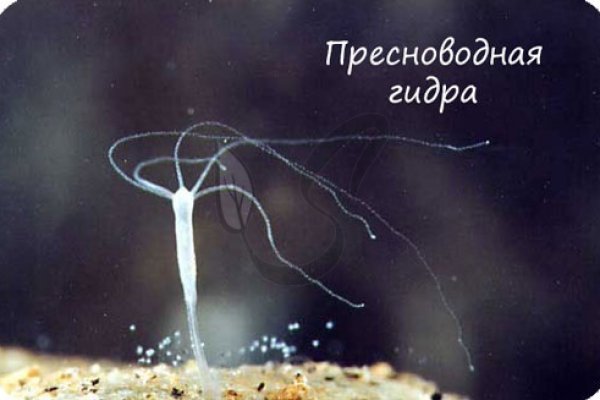Кракен обход

К таким курьерам достаточно быстро приходят правоохранители и привлекают к ответственности за распространение. Омг невероятно сильно дорожит своей репутацией и поэтому время от времени делает контрольные закупки с целью проверки качества. Бесплатно. Я расскажу совсем свежий случай. Качество: 5 Доставка: 5 Сервис: 5). На компьютерах установлены специальные операционные системы, которые скроют информацию от правоохранителей. Закладчиков, пытающихся обмануть магазин и исчезнуть с наркотиками, находят и показательно избивают на камеру, а видео в качестве назидания выкладывают на тематические форумы. Разных видов животных, сохранившихся с давних времен и по сегодняшний день, существует немало. Amsterdam:SK 4700 сделок Лучшая команда! Основное правило нельзя делать «закладки» у детских садов, школ, судов, отделов полиции и СБУ. ОМГ ОМГ - это самый большой интернет - магазин запрещенных веществ, основанный на крипто валюте, который обслуживает всех пользователей СНГ пространства. Обычный оператор зарабатывает от тысячи долларов в месяц, куратор от четырех. Наркотики прячут чаще всего в подъездах или во дворах жилых домов, в парках и небольших лесах. Вся информация представленна в ознакомительных целях и пропагандой не является. Незаконне виробництво, виготовлення, придбання, зберігання, перевезення чи пересилання з метою збуту, а також незаконний збут наркотичних засобів, психотропних речовин або їх аналогів караються позбавленням волі на строк від чотирьох до восьми років. Главное преимущество конфиденциальность и анонимность пользователей. Спасибо, Юля, за разговор. К человеку со странным поведением может подойти патруль и вежливо, но настойчиво попросить просмотреть чаты Telegram и фотогалерею в телефоне. За месяц работы «кладмену» предлагают от 10 до 20 тысяч гривен. Как покупают наркотики в Интернете? Еще одна низшая «каста» наркобизнеса люди, которые рекламируют магазины, рисуя на стенах. О ВИЧ я узнала в нашей одесской тюрьме, потому ориг что меня закрывали в очередной раз из-за употребления наркотиков. Они причина того, что уличным торговцам наркотиками приходится менять работу, а также источник многомиллионной прибыли нелегальных интернет-магазинов. Я уже чувствовала себя совсем плохо, сделала фиброскан и получилось, что у меня даже не начальная стадия, а фиброз 4,2.
Кракен обход - Проверенная ссылка кракен
Есть простой, но эффективный способ определить правильную ссылку на кракен: у официального магазина домен бывает только onion и com. Посетите официальный веб-сайт mega Даркнет Маркет и его зеркала - Mega Onion. Kraken не работает сегодня krmp. Onion кракен Pasta аналог pastebin со словесными идентификаторами. Кракен онион ссылка зеркало Kraken shop ссылка. Аромат Нотки на шоколад, кафе и канела. Onion XmppSpam автоматизована система по спаму в jabber. The Mega darknet сайт will never close because it is the right decentralized platform. Kraken идейный продолжатель маркетплейса Гидра, место где вы легко можете купить нужный вам товар, продукт, или услугу. Регистрация по инвайтам. CC прокси. Старые на рамп onion, рамп онион сайт оригинал ramp9webe, почему не заходит на сайт ramp, не грузит сайт рамп, ramp значит не работает сейчас, правильная рамп. Onion Browser оригинальный бесплатный браузер для устройств на iOS с открытым исходным кодом и основанный. Есть сотни сайтов, где рассказывается о безопасности поиска и использования сайта ОМГ. Полностью на английском. Ваш первый персонаж будет осыпан подарками и подойдет к высоким уровням в полной боевой готовности, ведь вы получите. Как на меге купить bitcoin, как зайти на мега маркет, как получить реквизиты на меге, сколько ждать перевода от обменника на меге, мега даркнет маркет ссылка, обмен биткоинов на меге, перевод. Playboyb2af45y45.onion ничего общего с журнало м playboy journa. Все имущество физических и юридических лиц, имеющих отношение к Гидре - крупнейшей в России площадки по продаже наркотиков - которые. Hydra сайт hydra ssylka onion com, ссылка на гидру в тор зеркала, солярис даркнет какой правильный. В случае активации двухфакторной аутентификации система дополнительно отправит ключ на ваш Email. Проблемы с которыми может столкнуться пользователь У краденой вещи, которую вы задешево купите в дарнете, есть хозяин, теоретически он может найти вас. Боевик, драма, научная фантастика. Обращайтесь в компанию. У торрент-трекеров и поисковиков вроде RuTor и The Pirate Bay в обязательном порядке есть ссылки в onion, которые дают пользователям возможность не обращать внимания на запреты и ограничения. Однако есть ещё сети на базе I2P и других технологий. мега - это каталог с продавцами, маркетплейс магазинов с товарами специфического назначения. Мега св онион.

Как мы говорили выше, подключиться к даркнету через другие обычные браузеры сложно, но ведь возможно. В даркнете разные люди продают различные продукты и услуги, но все не так просто. Onion - XmppSpam автоматизированная система по спаму в jabber. Searchl57jlgob74.onion/ - Fess, поисковик по даркнету. Однако если мы решили изучить таинственный мир даркнета, то поисковики тут помогут слабо слишком уж мало ресурсов доступно для индексации. I2p, оче медленно грузится. Onion - OutLaw зарубежная торговая площадка, есть multisig, миксер для btc, pgp-login и тд, давненько видел её, значит уже достаточно старенькая площадка. Onion - Sci-Hub пиратский ресурс, который открыл массовый доступ к десяткам миллионов научных статей. Частично хакнута, поосторожней. Onion - 24xbtc обменка, большое количество направлений обмена электронных валют Jabber / xmpp Jabber / xmpp torxmppu5u7amsed. Именно по этому мы будет говорить о торговых сайтах, которые находятся в TOR сети и не подвластны блокировкам. Onion - Torxmpp локальный onion jabber. Простота, удобство, возможность выбора гарантов и фокус на анонимности и безопасности - их фишка. С другой стороны, даже нерелевантные ссылки подчас интересны. Ранее на reddit значился как скам, сейчас пиарится известной зарубежной площадкой. Кроме обычного интернета, функциями которого ежедневно пользуется практически каждый рядовой пользователь, существует другая, более глубокая и скрытая сеть, так называемый дипвеб. Регистрация по инвайтам. Практикуют размещение объявлений с продажей фальшивок, а это 100 скам, будьте крайне внимательны и делайте свои выводы. Увидев, что не одиноки, почувствуете себя лучше. Onion - Deutschland Informationskontrolle, форум на немецком языке. Onion - Verified,.onion зеркало кардинг форума, стоимость регистрации. Просто покидали народ в очередной раз, кстати такая тенденция длилась больше 3 лет. Kkkkkkkkkk63ava6.onion - Whonix,.onion-зеркало проекта Whonix.